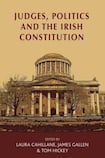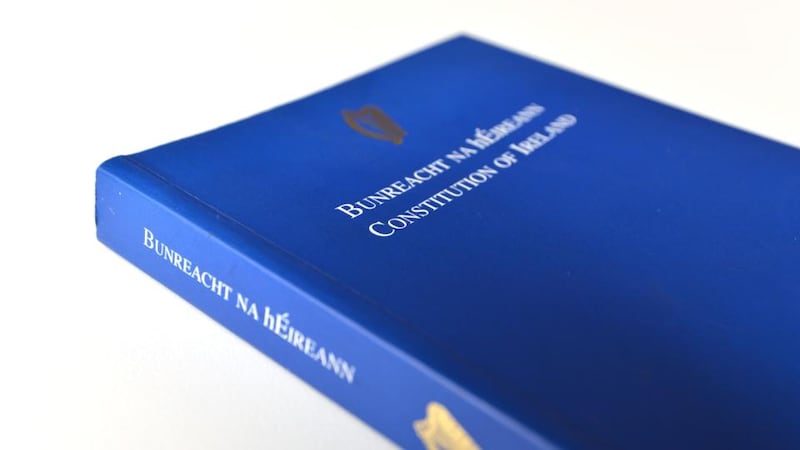
The view that judges should interpret the Constitution in line with changing social conditions divides critics into at least three broad camps.
In the red corner are opponents of “judicial activism”, who argue that the text should be read literally. A hard-line version of that view is that the Constitution must be construed strictly as it was understood when it was enacted. In the blue corner are defenders of the idea that a constitution is a living instrument, who believe that judicial interpretation must keep pace with society. Somewhere in the middle is the realist school of jurisprudence, which views “law” as simply a prediction of what the ultimate decisionmaker will feel about the case.
Judges, Politics and the Irish Constitution, a timely collection of essays about the Constitution and judicial power drawn from papers at a legal conference at Dublin City University, throws light on this important debate.

In his chapter Mr Justice Gerard Hogan plays the familiar role of sceptic in relation to “unenumerated” – or implied – constitutional rights, although conceding the principle. By contrast Prof Fiona de Londras of the University of Birmingham, playing for the blue team, makes a powerful case for judicial creativity, in a chapter entitled “In defence of judicial innovation and constitutional evolution”. For me it is the best piece in a very good book.
De Londras argues that constitutional law is evolutionary and that no text can have anticipated all future developments. Governance is an activity “that must constantly address new and emerging issues”. A constitution is a broad document that must be interpreted purposively.
This theme is echoed by David Prendergast of Trinity College Dublin, who argues that the requirement for judges to give reasons for their decisions provides a safeguard. Claire-Michelle Smyth in the same vein provides a spirited defence of socioeconomic rights.
The headline chapter of the book is an essay by the late Mr Justice Adrian Hardiman in which he launches a withering critique of the European Court of Human Rights for its decision in the case of Louise O’Keeffe v Ireland, about the State’s liability for abuse by a national-school principal. Hardiman argues that the requirement to exhaust domestic remedies was cast aside in the O’Keeffe case, mainly because the key issue of liability had not been pursued in the Supreme Court.
A solid defence of the Strasbourg decision is provided by Conor O’Mahony. He makes the points that the rule that all remedies must be exhausted locally was never absolute and that there is no obligation to attempt a remedy that is unlikely to be effective. Nor must applicants pursue every possible remedy if they have tried to address their essential grievance.
In the case of A, B and C v Ireland, on abortion, the State had argued that the applicants’ failure to bring any form of proceedings in Ireland meant that the application should be held to be inadmissible. The State’s position was that “the Constitution required remedies where there were constitutional rights and the domestic courts would make all rulings required to protect those rights”.
The European Court unconvincingly dismissed this argument, even though it expressly accepted the principle that “in a legal system providing constitutional protection for fundamental rights it is incumbent on the aggrieved individual to test the extent of that protection”. Remedies that are clearly ineffective do not need to be exhausted, of course. An obvious example is that there is no remedy against a procedure or provision set out in the Constitution itself.
Whether the O’Keeffe and A, B and C decisions correctly apply the rule on exhaustion of remedies must remain open to debate. But the exposition of both sides of the argument, as expertly done in this book, can only illuminate the process of legal reasoning and promote greater understanding of the issues at stake.
Other stimulating pieces in this collection include those by Laura Cahillane and David Kenny on judicial appointments, John O’Dowd on executive-judicial dialogue, and Oran Doyle on the vagueness doctrine, as well as very interesting historical pieces by Thomas Murray, Donal Coffey, Rory Milhench and Tomás Finn.
Eoin Daly contributes on judicial supremacy, Tom Hickey on the idea of principle in constitutional adjudication, and James Gallen on the O’Keeffe case.
Each chapter contains much of note. Dublin City University’s school of law and government and Manchester University Press have done a great public service by preparing and bringing out this excellent book. It will be read by anyone with an interest in how the judicial power of the State should function in a modern democracy.
Mr Justice Richard Humphreys is a judge of the High Court









